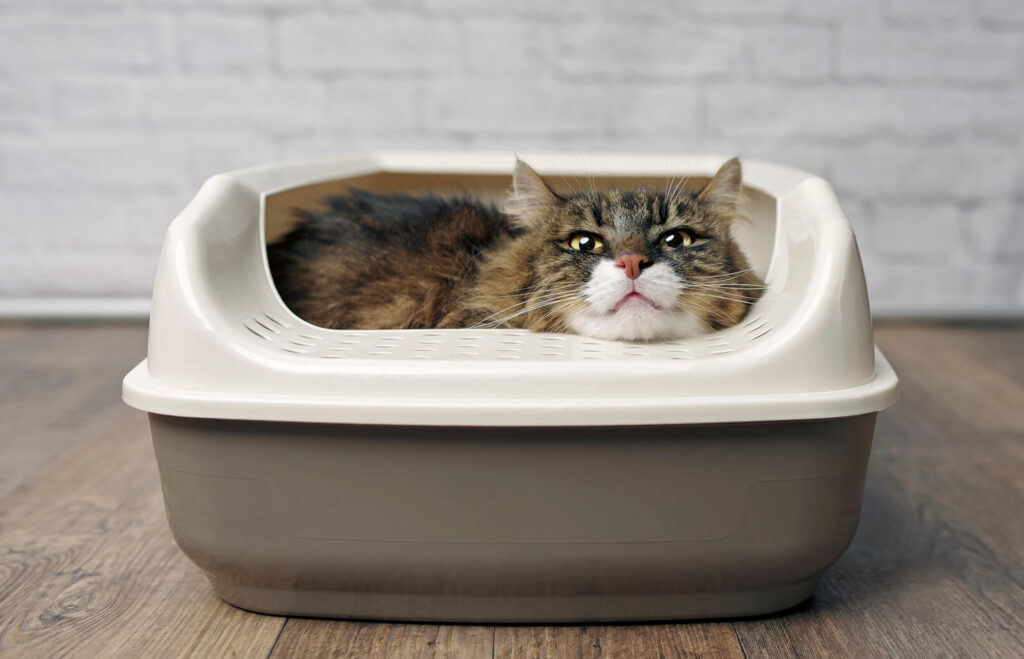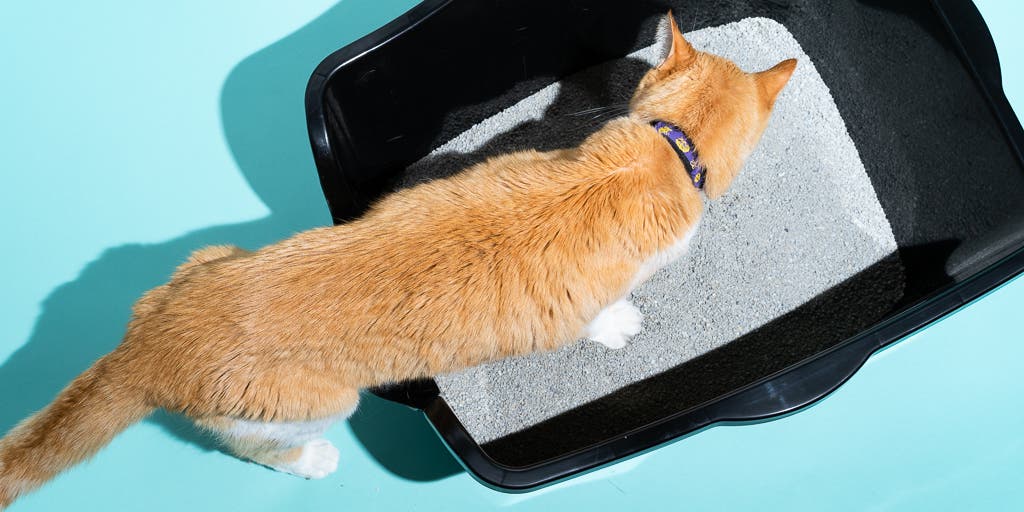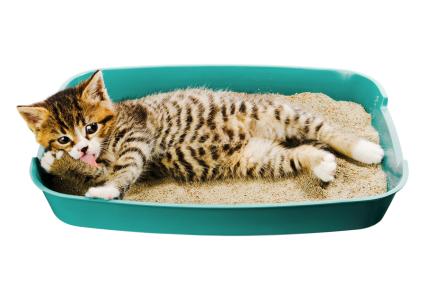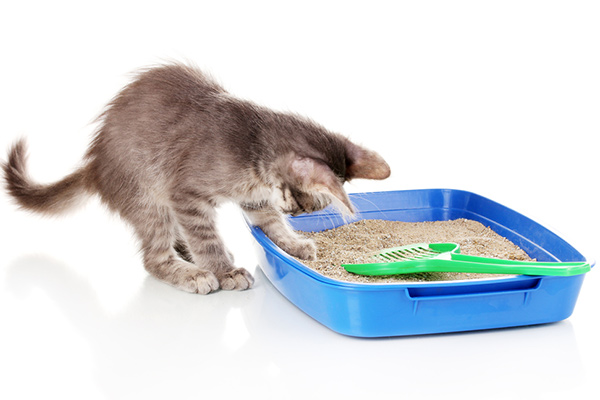Moving to a new house is often one of the most disruptive life changes to our pets, especially cats.
Our kitties are averse to change—they are highly territorial creatures who prefer spending most of their time in familiar environments.
Unfortunately, when we move to new homes or houses, they have to move too.
But how your kitty reacts to the new environment has a lot to do with her individual temperament. However, as a benevolent pet owner, it is your responsibility to ensure that your cat is as comfortable as possible in your new home.
You need to put time and effort to reduce any form of stress and lessen the likelihood of your fur bay developing any fear –or anxiety-based behaviors.
And one of the most common fear-or anxiety-based behaviors that most cat owners cite when they move to new houses is the use of a litter box—after the move, many cats tend to avoid their litter boxes.
But once your kitty avoids her litter box, I bet you understand that it can become a chronic problem! For one, there are high chances that the cat will develop location preference for elimination—which maybe your living room carpet or your favorite furniture.
Like other pet behavioral issues, the best way to deal with such a problem is to prevent them before they happen by getting your cat to use litter box in the new house as she used to in your previous house.
To help you out, I will highlight exactly how you can get your kitty to use the litter box in a new house.
But before then, let’s understand why a cat may avoid her litter box when you move to a new house in the first place…
Why Your Kitty Is Avoiding Litter Box in the New House

Understanding the underlying reason why your cat is avoiding the litter box when you move to a new house is critical to avoiding her behavior.
Here are three main reasons why your kitty may avoid her litter box:
A. Stress
Stress is one of the biggest causes of litter-box problems in cats.
As aforementioned, kitties love routine and as soon as they realize that something has changed, they start to get stressed.
And when they get stressed, they eliminate in the wrong places.
B. Location preference
Cats tend to develop preferences for areas they like to eliminate and are inclined to avoid locations that they don’t like.
Consequently, they might avoid the litter box if it’s located in a different location or if it is placed in an area that they dislike.
C. Litter Preference
Since our feline friends are predators who hunt at night, they have sensitive senses of smell to help them navigate through their environments.
Some of these sensitivities can influence their reaction to new litter boxes or when their litter boxes are moved to a new house.
A cat that has grown accustomed to certain litter (or smells around her litter) may dislike any slight change (like smell or feel) to her litter.
12 Ways to Get Cat to Use Litter Box In New House

1. Place the litter box in accessible location
Most cats like it if their litter boxes are located in quiet places.
Due to their predatory nature, they also like to see people and other animals approaching. They also love to have multiple escape routes in case they need to leave the litter boxes quickly.
To ensure that your kitty will use her litter box in your new home, consider:
- Placing the box in accessible section, away from high-traffic areas and away from corners or areas where the cat might feel trapped.
- Keeping the box away from loud or intimidating areas like next to your pup’s food bowl, dryer or washer.
2. Eliminate potential sources of stress in your kitty’s environment
As aforementioned, stress is one of the top reasons why your cat may stop using her litter box when you move to a new house.
So, to get her to use the box appropriately again, strive to eliminate any source of stress in her environment.
- Keep her routine as predictable as possible
- Keep her water and food bowl full always and in the same location
- Consider closing your window blinds so that she is not intimidated by other animals outside.
- Consider diffusing stress-relieving synthetic pheromones around the litter box area
3. Help her create positive association with the litter box
Helping your kitty create a positive association with her litter box can also go a long way in making her use the litter box in the new house faster.
The best way to do this is to use things that she enjoys like tasty treats, her favorite toys, and catnip.
Consider scattering treats and her favorite toys in the area around her litter box or spraying some catnip near the entrance of the box.
Additionally, provide positive reinforcement whenever she approaches her litter box. For instance, you can give her a treat to assure her that she is doing the right thing.
4. Give Your Kitty a Litter Box Refresher Course
Show your cat her new litter box location as soon as you arrive in the new house by setting her in the box and letting her sniff and examine it.
Ensure that you don’t move the box once you’ve shown her to avoid confusing your fur baby.
Consider setting her in the box immediately following meals and after waking up from naps. If you realize that she needs to go, pick her up and put or direct her to the litter box.
But never punish or scold her to use her litter box. Doing so will lead to stress, which will exacerbate the problem.
Our feline friends seldom associate punishment with the incident in question, so punishment doesn’t train them to avoid mistakes in the future.
5. Clean and take care of the litter box
To get your cat to use the litter box normally as she used to, ensure that you clean and take proper care of the box.
Not only will this eliminate the dreaded cat elimination odor but it will also make the litter box pleasant and enticing to your kitty.
Clean and disinfect the litter box once a week with warm water and unscented soap or baking soda (with no soap). Replace any soiled litter as appropriate.
Avoid using scented soaps, bleach, or commercial disinfectants because your kitty may develop an aversion to their scents and some may harm him.
Whenever the cat fails to use her litter box and eliminate in the wrong place, clean the area with an enzymatic cleaner to neutralize the odor that may attract the cat to the same location.
One product that I often recommend to cat parents when it comes to keeping their kitty’s litter boxes clean is PetFusion Portable Litter Disposal system.
This is essentially a trash that’s designed to keep clumped litter behind a second lid, locking in odors and bacteria.
This implies that when you open it, you won’t be suddenly hit by the smell of older litter.
It is also portable, which means that you can easily place it next to your kitty’s litter box.
6. Make elimination in inappropriate areas less appealing

If your cat is avoiding the litter box because she has developed a habit of going to certain locations, consider blocking her access to those areas or find ways of discouraging her until she relearns good habits:
- If the preference is in dark spots, consider putting a bright light or motion-activated light in the area.
- Make the area unpleasant for her to stand by placing a tin foil or double-sided sticky tape.
- If she likes doing her business in your sinks or bathtubs, consider filling them with a shallow layer of water when they are not in use.
- And if she prefers furniture, cover them with plastic sheets
7. Incentivize her with familiar scents
Our feline friends have superb senses of smell and tend to be drawn by familiar scents.
You can make your cat to use the litter box in your new house faster by pouring a bit of the used litter in the box.
There are high chances that she will quickly recognize the scent and will trust the new elimination environment.
This strategy may not work with self-cleaning litter boxes since the cat may not pick up the scent before it is cleaned by the machine.
8. Invest in more litter boxes
If your new home is a multistory house, it is advisable to keep at least one litter box per floor.
It is also advisable to add more litter boxes in the wrong places where your kitty is eliminating.
While this may not be practical if it is your living room carpet, it is worth giving a try if your kitty is soiling out-of-way corners of your new house.
9. Mimic the old elimination environment

Another trick that you can leverage to make your kitty use her litter box in your new house is to imitate her old elimination environment as possible.
Consider adding spare tiles or pieces of rugs to the new location to match the flooring, position familiar pieces of furniture and adjust light levels so that she can recognize the elimination space.
And don’t be tempted to throw her old litter box before she masters her routines in the new house.
Using older litter box will make it easier for her to adjust faster to the new surrounding because the scents of your old house will be familiar to her, which will encourage her to continue using the litter box.
10. Introduce her to one room first
Another excellent trick to make your kitty to use her litter box in a new home is to introduce her to one designated room that has been set up with a liter box, water or food bowls, and familiar furniture.
Let the room be her only home for the first one week while she settles in. This will give her an opportunity to get used to the new sights, sounds, and smells and to generally acclimate to the new space.
If possible, spare time to quietly spend some time with her in the temporary, designated room to help her feel comfortable and secure in the new house.
11. Follow your kitty’s lead
The more anxious your cat is, the more gradual you’d want her to get used to her litter box in the new house.
It may be too much for an already stressed cat to properly use her litter box right away considering that she needs to learn her litter box positioning in an unfamiliar environment.
Make everything gradual, including using her litter box. As she eases and become used to the new environment, curiosity will replace anxiety and she will be ready to expand her explorations and do everything right.
12. Talk to Your local vet
Certain medical conditions may make our feline friends avoid using their litter boxes.
So, to figure out what could be causing your kitty to avoid her liter box in the new house, it is prudent to rule out medical causes. This calls for taking your kitty to a local vet for a physical examination.
Fortunately, most of the feline medical conditions that are known to cause lapses in litter box use can be easily managed.
Even if there is no underlying medical condition, your vet could prescribe for you anti-anxiety drugs that can go a long way in helping your cat get used to the new environment.
Closing Thoughts
Training a cat to use her litter box in a new house can be a challenge, but it can be done.
If anything, lapses in litter box use is only a cat’s way of showing confusion, frustration, and stress.
With patience, your kitty will definitely learn to move her elimination habits to your new home and everybody will be happy.
Cats are different and what works for your cat may not work for your neighbor’s.
So, you might need to experiment with the solutions I have suggested above until you find the right combination that makes your kitty comfortable enough to appropriately use her litter box.
Finally, mastering feline behaviors can be complex, especially if you’re a new cat parent. To help you learn more about your kitty, I suggest that you read the following books:
- Pam Johnson-Bennett’s Starting from Scratch: How to Correct Behavior Problems in Your Adult Cat
Related Posts:
How to Attract Cat to Litter Box (10 Sure-Fire Strategies)
Litter Box with Carbon Filter—An Ingenious Way To Maximize Odor Control

Hi! I am Eleanor Price. I started this website after my cat, Louie, almost died from a case of botulism (a type of food poisoning often caused by bacteria that grow on food items). Turned out that my cat’s diet was the problem. I have made it my duty to provide the best information and recommendations about everything cat lovers need to know about their felines’ health and wellbeing. My goal is to find the most informative content on anything feline-related and share it with fellow hardworking kitty lovers.

